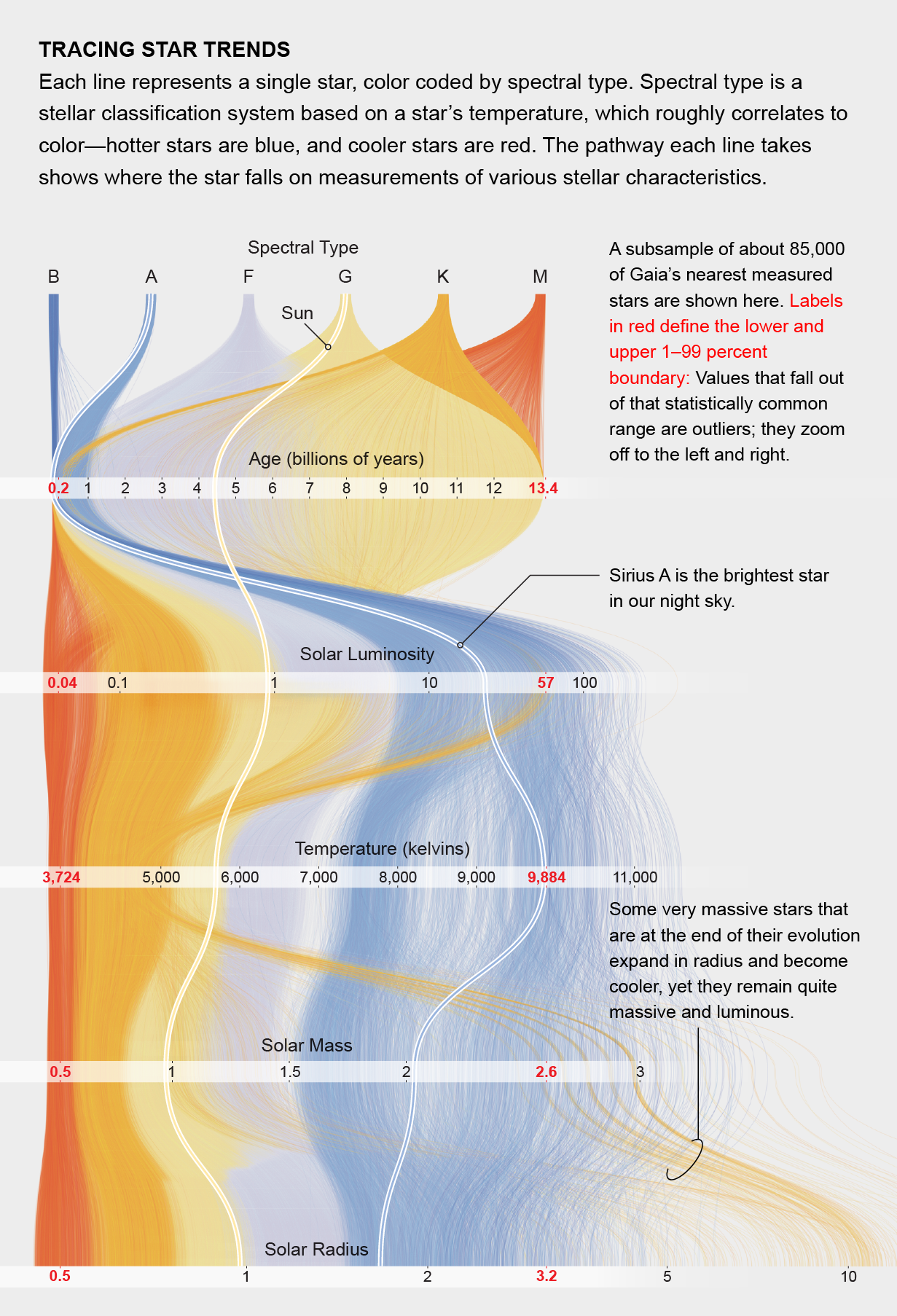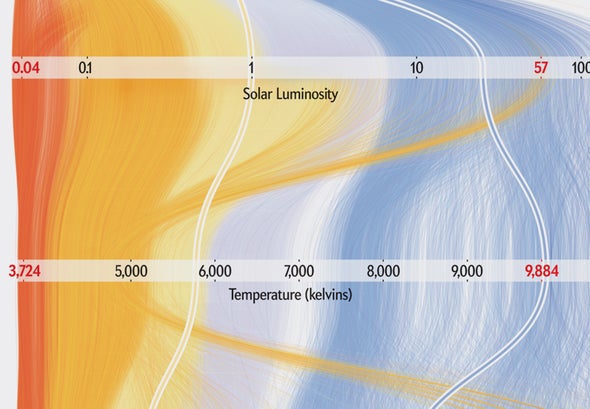After launching to space in 2013, the European Space Agency’s Gaia telescope has been spinning in full circles every six hours, mapping all the stars it can see in every direction. Scientists recently released a new catalog of the mission’s latest data, which includes measurements of the chemical compositions, temperatures, colors, masses, ages and speeds of almost two billion stars in the Milky Way. These data reveal typical trends for stars: The massive stars tend to be hot and young. Because they don’t live for long, the older massive stars will have died out by now. The smaller stars with lower masses live much longer, so we find them at every age, and they tend to be cooler and redder.
Gaia’s observations help astronomers piece together our galaxy’s history and understand how it compares with others across the universe. “We are sitting inside the Milky Way,” says Timo Prusti, Gaia’s project scientist. “It’s like a forest: you see lots of trees, but you don’t know what the forest looks like because you are inside. With Gaia, we are trying to measure all the trees so we can figure out what it looks like.”



